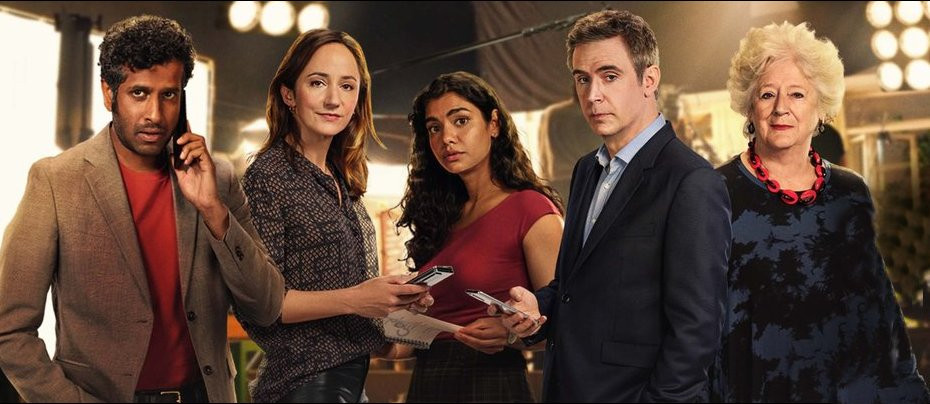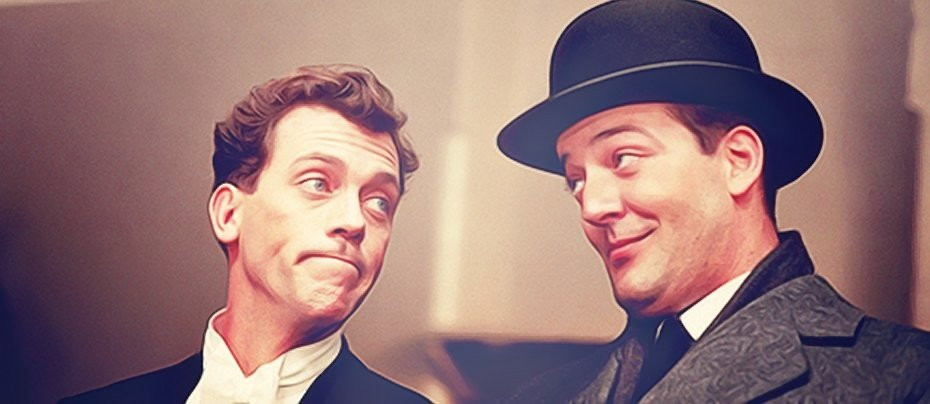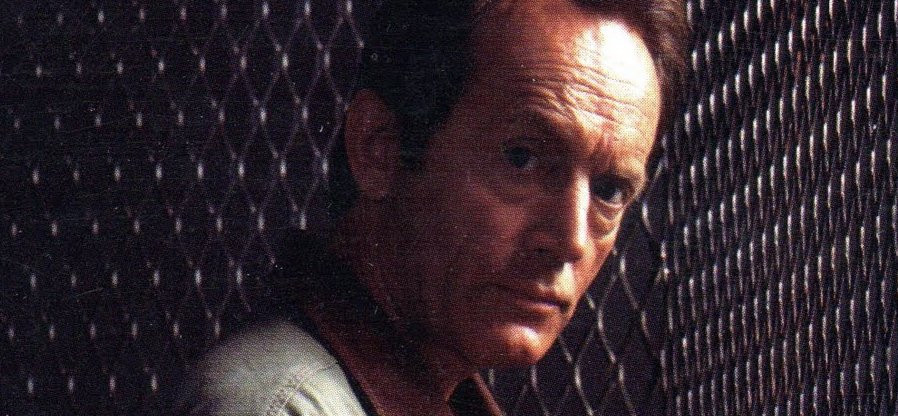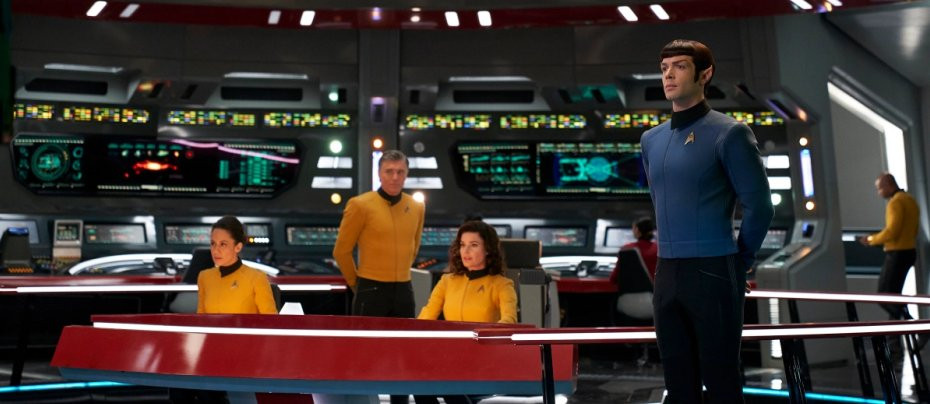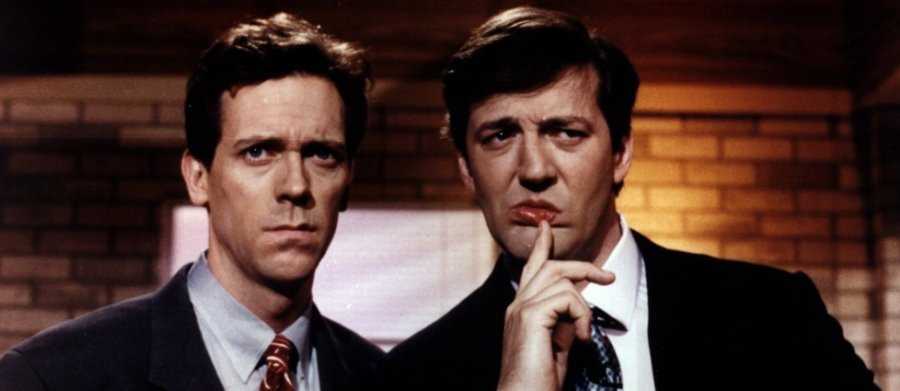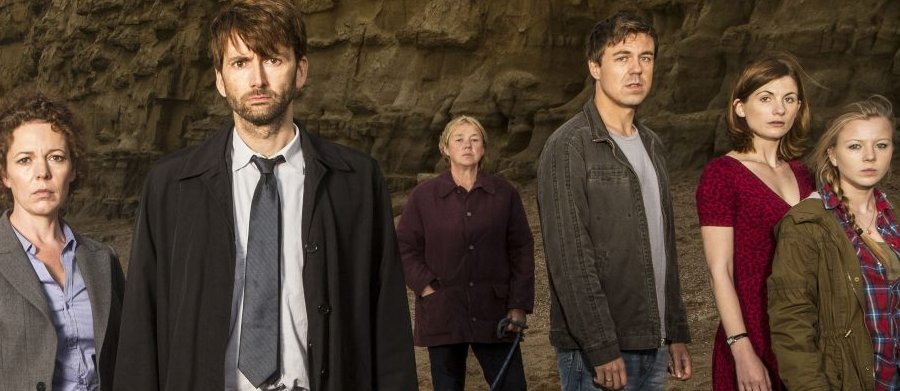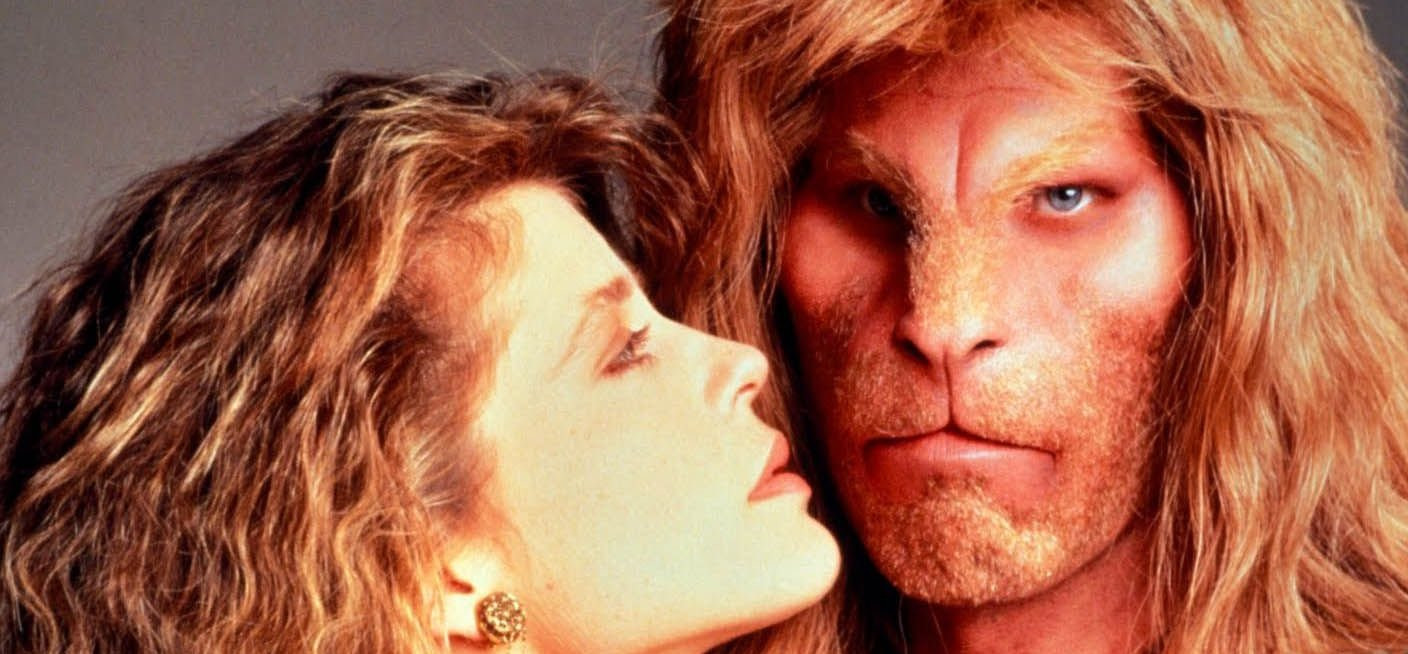
The Sandman
2022 - United States“within the universe of The Sandman there are many powerful and mysterious entities”
A Review by Daniel Tessier
The Sandman, Neil Gaiman's magnum opus, is rightly celebrated as one of the greatest comicbooks of the 20th century. Originally running for 75 issues between 1989 and 1996, The Sandman began as a very loose reboot of a golden age superhero comic, but was entirely reimagined as a dark fantasy series with a vast array of influences, from classical mythology to old EC horror comics. Published by DC – more famously home to characters like Superman, Batman and Wonder Woman – The Sandman initially tied in quite strongly to the established DC universe, before moving to the Vertigo imprint and becoming very much its own strange and miraculous world.
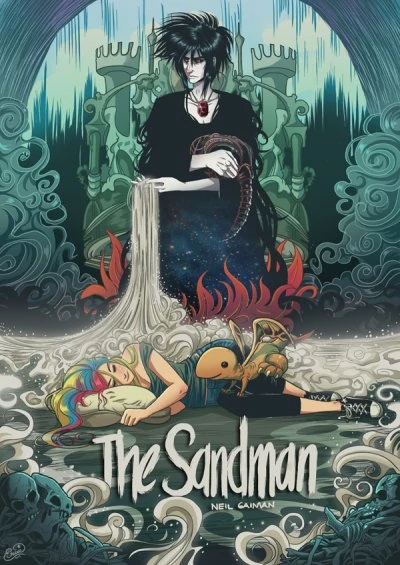
Within the universe of The Sandman there are many powerful and mysterious entities, from ghosts and faeries up to demons and angels, to the gods themselves and beyond. Among the most powerful and fundamental beings in this universe are the Endless, seven siblings who personify essential elements of life and humanity. In spite of being so powerful that gods fear them, they are not invulnerable, and they are remarkably human in their personalities and behaviours. From the eldest to the youngest they are Destiny, Death, Dream, Destruction, Desire and Despair (twins), and Delirium, who was once Delight before something unknown changed her.
The Sandman, of course, focuses on Dream, known by as many names as there are cultures, although his favourite seems to be Morpheus. A haunting and haunted being with a capricious temper and a severe superiority complex, Morpheus normally appears as a tall, gaunt, extremely pale man in black, with a mane of dark hair (not entirely unlike a highly caricatured version of Gaiman himself). However, he has just as many forms as he has names, and it's hinted that this is just how we, the readers and viewers, see him. The story of The Sandman begins in 1916 when Morpheus is captured by an occultist who was trying to capture Death and hold her in return for immortality. Upon finally being freed after decades of imprisonment, Morpheus must find and win back his stolen totems, restore the world of the Dreaming, and deal with the chaos inflicted on Earth in his absence. (Keeping the start date of the story the same, but bringing the main events up to the present day has necessitated some tweaking, especially when explaining characters' ages.)
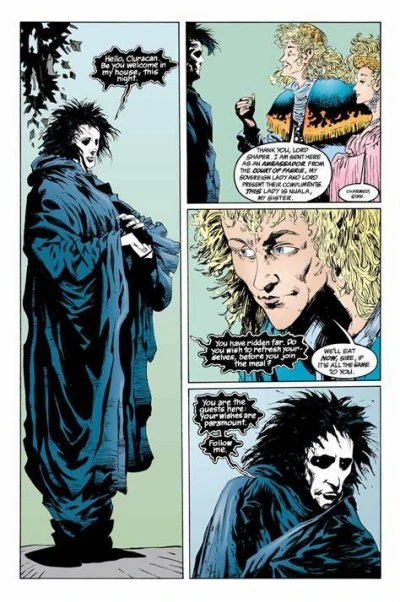
The comics formed a vast and expansive graphic novel which became critically and popularly acclaimed and has been a huge influence on comics, horror and fantasy ever since. Naturally, there have been many attempts to bring it to the screen. Some dreadful attempts at film scripts were thrown out by Gaiman, although one came close to being made in the 2010s. Still, a film seems entirely unsuited to such an expansive narrative. An adaptation would need to be serialised. Around 2020 Gaiman began working with other creatives on two separate adaptations: one, a full-cast audio series from Audible, began being released in 2020 and is a faithful recreation of the book. Finally, in the summer of 2020, The Sandman came to the screen as a ten-part Netflix television series, with David S. Goyer (Blade, Man of Steel, The Dark Knight) and Allan Heinberg (Wonder Woman, Sex and the City, Grey's Anatomy) taking on the chief writing duties, working closely with Gaiman.

The television series is a powerful and beautiful melodrama, and one with a difficult job: it has to satisfy the many devoted fans of the original comic, while also remaining accessible for viewers who are entirely new. Thankfully, thanks to some deft scriptwork and some truly excellent performances, The Sandman succeeds on both these counts. Naturally, as with any screen adaptation, there had to be some changes, and for the most part these only improve the series as a work for television. It has been sanitised in comparison to the original book, which, especially in its earliest issues, contained some true horror, although some surprisingly gory new elements were introduced. Some important, but upsetting, elements of sexual violence have been either removed, or left to inference. Much of this is no doubt to make it more palatable for television (and avoid an inaccessibly harsh rating), although reportedly a great deal more was shot and was left on the virtual cutting room floor since the finished episodes simply worked better without it. Notably, as a streaming series, there's no need to keep episodes to a pre-ordained length, so any snips are purely to make the finished product better.
Those early issues (the main series adapts the first sixteen issues or first two volumes) also clung tightly to the established DC universe, with many well-worn heroes and villains appearing, albeit some in surprising ways. While there are a couple of such characters in the adaptation, they're reworked, and most of these cameos are cut-out. Some of this is for rights reasons, but largely it's because there simply isn't room for them, and they'd make the series impenetrable for those who aren't steeped in the comics. The series starts out like the comic eventually ended up: entirely its own creation.
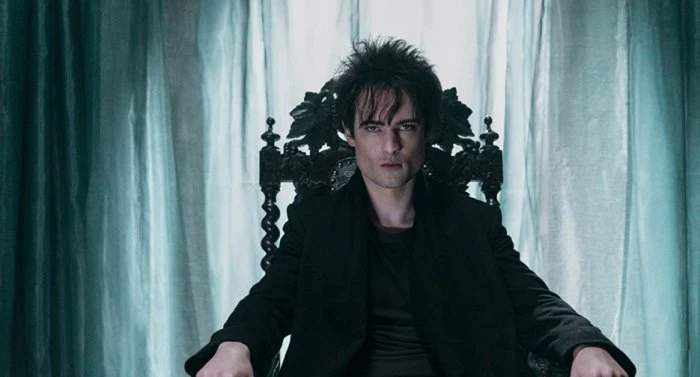
Of course, the success of the series hinged on the casting of Morpheus himself. After a number of recognisable names were bandied about, it was revealed that Tom Sturridge had been cast as the Dream Lord. Acclaimed but not widely known, Sturridge had previously won the Tony Award for his performance in the Broadway play Orphans, and had appeared on film in Mary Shelley, Far from the Madding Crowd and The Boat That Rocked, and on television in The Hollow Crown, Sweetbitter and Irma Vep. He's certainly physically right for the part, a pale and slender figure, and elected to go down the brutal method route of losing a great deal of weight for the initial filming, gradually putting it on as Morpheus returned to strength after his imprisonment (necessitating the unusual choice to film much of the series chronologically).
Sturridge gives an exceptional performance as Morpheus. He's softly spoken yet with remarkable authority, able to appear suddenly cold and aloof and convince as truly otherworldly. Yet he easily embodies the petty, almost childish side of Dream, a being who, in spite of millions of years of existence, has never fully grown up. The series sees Morpheus not only fight to regain his power, but also learn a great deal more humility and humanity as a result of his imprisonment and his facing of the consequences of his disappearance. Sturridge owns the role and gives it an incredibly commanding presence, even in the first episode where he is largely left to sit, naked and helpless, in his glass prison.
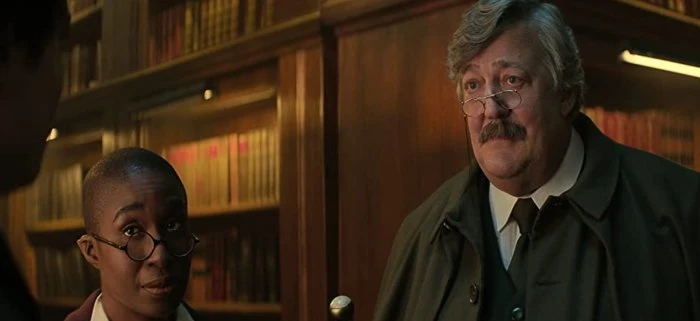
The Dreaming is home to many more beings than its king, of course, some of whom were created by him, others who arrived there once and decided to stay. Patton Oswalt (The King of Queens, The Goldbergs, Mystery Science Theater 3000) voices Matthew, a raven who was once a man and who accompanies Morpheus throughout his journey. A reasonably significant figure in the book, Matthew is given a greater role in the series and acts as a voice of caution, exposition and very reasonable fear as he does his best to guard Morpheus during his travels. Higher almost than anyone in the Dreaming is Lucienne, who was once a raven herself until she was given human-like form by Morpheus. Unlike the elfin old man of the comics, Lucienne is a quietly commanding woman played by Vivienne Acheampong (The One, The Witches). In spite of her background in comedy, Acheampong gives an incredibly straight and subtle performance as Dream's most loyal servant, who took care of his realm in his absence.
Other inhabitants of the Dreaming are stranger and more sinister. Cain and Abel, the biblical first murderer and his victim, played by Sanjeev Bhaskar (Goodness Gracious Me, Unforgotten, The Indian Doctor) and Asim Choudhury (People Just Do Nothing) respectively, are doomed to play out their brutal relationship for eternity. The great Mark Hamill (Star Wars, Batman: The Animated Series) voices the scarecrow-like janitor Merv Pumpkinhead, while Ann Ogbomo (Wonder Woman) is the repentant nightmare Gault.
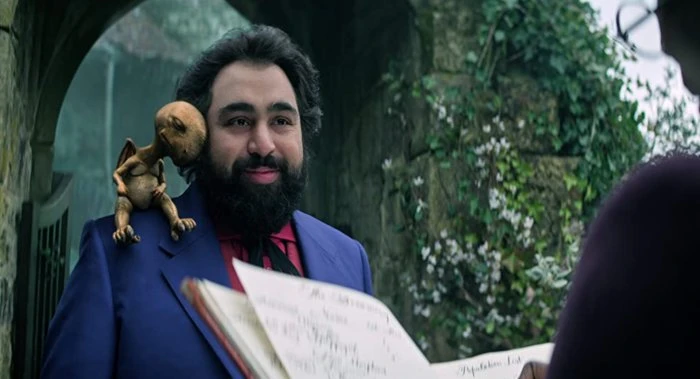
Worst of all is the Corinthian, perhaps the most horrific nightmare Morpheus ever created, a happy, eyeball-eating murderer. Already a serious threat in the comicbook, the Corinthian is elevated to main villain role here, and his ongoing presence and machinations help hold the serial together in a more coherent fashion. Boyd Holbrook (The Predator, Logan, The Fugitive) steals his every scene as the Corinthian, magnetic, handsome and charming, but also utterly terrifying. Morpheus condemns the Corinthian for abandoning the Dreaming and committing his atrocities on Earth, but for all his monstrousness and hubris, he is merely acting as Morpheus made him. However, in the century that Morpheus is imprisoned, and the Corinthian is left to wander the Earth, he inspires an almost cult-like following among fellow serial killers, one of many darkness’s that plagues the waking world as a result of the Dreaming being left unchecked.
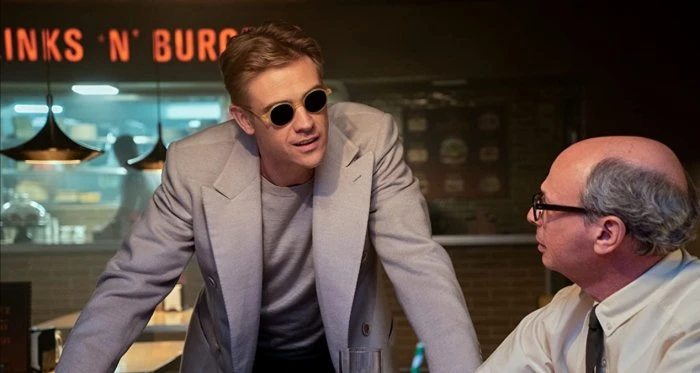
It's not merely nightmares that Morpheus must face in his mission, however. He finds himself trapped on Earth by the Magus, Sir Roderick Burgess, played with characteristic sinister gravity by Charles Dance (Game of Thrones, Going Postal, The Crown). The first episode is a remarkable exercise in tension, as Morpheus, with supreme petulance, sits in his glass prison and simply refuses to speak a single word to Burgess even as he taunts and threatens him. His son Alex (played as a boy by Benjamin Ainsworth – The Haunting of Bly Manor) eventually takes over the position in spite of his hatred of his father, until a brief lapse breaks the magical circle around Morpheus and allows him to escape, after 106 years of silently waiting.
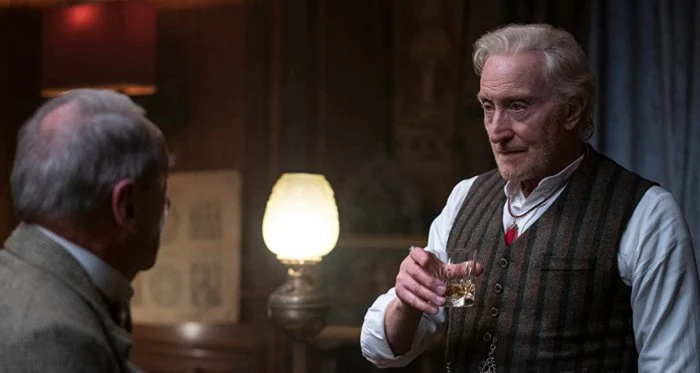
In the meantime, however, Dream's totems have been stolen by Burgess's one-time lover Ethel Cripps, played in the twenties by Niamh Walsh (Holby City, Jekyll and Hyde) and in the present day by the wonderfully talented Joely Richardson (Nip/Tuck, The Tudors, Event Horizon). Over the decades, Ethel loses two of the totems: a pouch of magical sand, which ends up in the hands of Johanna Constantine, and Morpheus' helm, traded to a demon in return for a protective amulet. She retains the ruby, the most powerful of the totems.
Episode three, “Dream a Little Dream of Me,” sees him cross paths with Johanna Constantine, who has since had the pouch of dream sand stolen. In casting the series, various changes were made to both the genders and ethnicities of characters, some of which give the stories a different inflection, others of which make little difference. Perhaps the most notable is that of Constantine. In the comics Morpheus meets John Constantine, star of the Hellblazer comics, one of DC/Vertigo's most popular characters. With an HBO series for Constantine in the works and holding up the rights, Gaiman was unable to use the character in The Sandman, but was instead able to use Johanna. Originally she was one of Constantine's ancestors (and appears as such in episode six), but by making her the modern day Constantine as well it gives the story a different feel and flavour. Jenna Coleman (Doctor Who, Victoria, Waterloo Road) is excellent as the roguish sorceress. (The HBO series is also the reason why Constantine was removed from DC's Legends of Tomorrow for its last series, and frankly it's hard to imagine anyone inhabiting the role as well as Matt Ryan does in that show.)
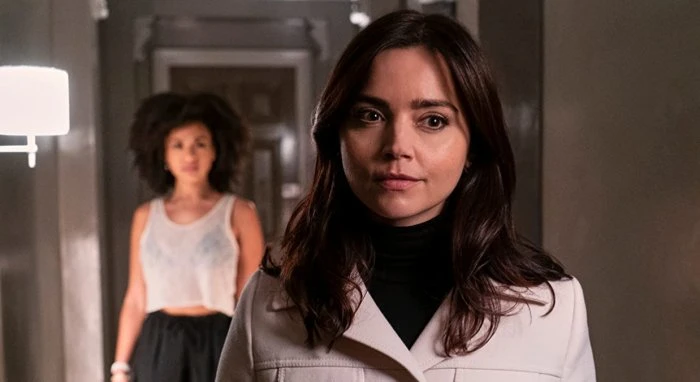
“Dream a Little Dream of Me” focuses heavily on Constantine, filling in much of her backstory and demonstrating her powers as she violently exorcises a demon, so much so that it looks very much like she's being set up for a spin-off. If that's the case then Coleman is more than up to carrying such a series, and she dominates this darkly humorous episode. Much of the gruesome horror of the original story is removed, but oddly replaced by gory new elements, one example of how this series can surprise even die-hard fans of the comic. There's a strong supporting performance by Meera Syal as randy vicar “Ric the Vic;” with Nina Wadia appearing in the series as one of the three Fates and Sanjeev Bhaskar involved as well, the programme becomes a bit of a Goodness Gracious Me reunion.
This is far from the last time Morpheus has a run-in with a demon. The primary storyline of episode four, “A Hope in Hell” sees him enter Hell itself to compete for the right to take back his helm. At first it appears he must take it from the demon who traded for it, the minor entity Choronzon (a somewhat underwhelming Munya Chawawa – Race Around Britain), but none other than Lucifer who takes on the challenge. Gwendoline Christie (Game of Thrones, Wizards vs Aliens, Star Wars Resistance) gives a performance of pure class and restrained menace as the ruler of Hell, perhaps the single most powerful being in The Sandman. As a performance, it's far closer to the character from the comics (who was visually based on David Bowie) than Tom Ellis in the popular but rather poor series Lucifer, who is ostensibly the same iteration of the character.
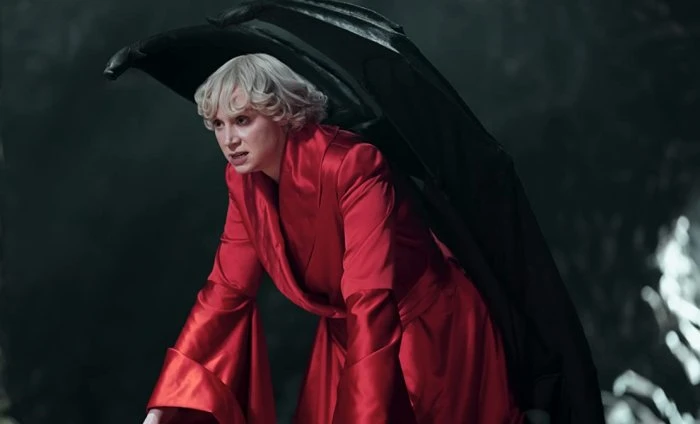
The ruby, meanwhile, is passed back into the hands of John Dee, Ethel's traumatised son. While in the comics John Dee was the Justice League of America villain Doctor Destiny, for television his character has been reworked entirely to become a subtler, much more believable character. Played by the exceptional David Thewlis (The Boy in the Striped Pyjamas, Seven Years in Tibet, Big Mouth), Dee has been warped by his mother's abandonment and his exposure to the ruby, but is disquietingly calm, reserved and likeable. However, he is fuelled by a hatred of lying and deceit, and sets out to reshape reality using the ruby so that no one will ever be dishonest again. Dee takes centre stage in other of the two storylines of “A Hope in Hell,” (this one based on the comic story “Passengers,”), in which he is given a lift by the unwitting Rosemary (Sarah Niles – Rocks, I May Destroy You) in what is largely a two-hander thriller. v
He is then at the centre of the following episode, “24/7” (a cute title, since it is made up from the sixth issue of the comic, “24 Hours,” and the seventh, “Sound and Fury”). This sees Dee unleash the full power of the ruby, first upon the patrons of a late night diner, with chaotic results that slowly expand into the world outside and are narrated over the news. “24/7” adapts the most harrowing story of the original book, and the episode itself pulls away from a lot of the brutality that was seen on the comic page. This is, frankly, a blessing, as it's nightmarish enough, as the various victims find themselves losing their minds as a result of the unrelenting honesty the ruby forces on them. The episode is held up by a wealth of acting talent: Emma Duncan (Dietland), Steven Brand (The Darling Buds of May, Hellsing Ultimate, Teen Wolf), Laurie Davidson (Will, Cats), Daisy Head (Shadow and Bone, The Syndicate), Lourdes Faberes (Good Omens, Grenslanders) and James Udom (Judas and the Black Messiah) all impress.
With the first five episodes focusing on Morpheus' mission to regain his power and his confrontation with John Dee, the sixth instalment, “The Sounds of Her Wings,” is a much-needed rest. The first half of the episode is based on the much-loved comic story of the same name, and introduces Kirby Howell-Baptiste (The Good Place, Killing Eve, Why Women Kill) as Dream's elder sister Death. One of the most adored characters from the original comicbook, Death is a far more cheerful, far better adjusted, far more human character than her little brother, a being who sees the best in life even as she is duty-bound to take those who have left it. “The Sound of Her Wings” sees Morpheus accompany Death on her rounds for a day, gaining a new perspective on humanity and life and knocking him out of his doldrums at last. (He is – marginally – more approachable after this.)
The second half of the episode is based on the later issue “Men of Good Fortune,” the whimsical and charming tale of Hob Gadling, a commoner who, in the comfort of a tavern in the 14th century, openly declares he refuses to ever die. Dream and Death, passing through, decide to grant his wish as a wager: Morpheus believes he will be begging for death within the century, while Death herself thinks he underestimates him. Morpheus agrees to meet Hob in the same inn on the same day every hundred years. What follows is a remarkable tour of English history as society and Hob's fortunes change, and a friendship slowly develops between the man and the deity. Ferdinand Kingsley (Mank, Victoria, Borgia) is perfectly cast as Hob, giving him just the right twinkle and charm along with the increasing thoughtfulness and depth as his life grows longer. Together these two stories make a single uplifting episode that's a highlight of the series.
While Death is an ironically lively and endearing being, other members of the Endless are less benevolent. While their presence in the series is limited (for now), Dream's younger sibling Desire is busy pulling strings behind the scenes. Portrayed by non-binary actor Mason Alexander Park (Cowboy Bebop), Desire is a vain, deadly, fluid creature who is not above manipulating their own family for power, or just for kicks. Park is perfectly cast in the role, with a seductive yet threatening manner that befits the embodiment of that most dangerous aspect of humanity (those internet loudmouths who are complaining over the casting of a non-binary actor might like to try reading the actual comic to see how Desire was originally portrayed). At their side is Despair, played by Donna Preston (Apocalypse Wow, Hard Cell), required to give a quieter but no less impressive performance as Desire's very dissimilar twin.

The remaining four episodes of the initial ten comprise a single storyline from the second volume of the book,“The Doll's House.” Unity Kincaid (Sandra James-Young – EastEnders, Auf Wiedersehen, Pet), one of a number of people who suffered “sleepy sickness” due to the disruption to the Dreaming when Morpheus was imprisoned, wakes up now elderly, yet aware that she had a daughter while she slept. She connects with her granddaughter Miranda Walker (Andi Osho – Paradox, I May Destroy You, Line of Duty) and great-granddaughter Rose Walker, who is, unwittingly, a Dream Vortex – a powerful being who can link dreamers, affect reality, and threatens the fabric of the universe itself. Newcomer Kyo Ra (aka Vanesu Samunyai) is excellent as Rose, a sweet, vulnerable yet indomitable character. With a subtle, fairly subdued but deep performance, she carries the bulk of these four episodes with remarkable ease. Definitely an actor who's destined for bigger things.
Rose begins searching for her long-lost little brother Jed (an infectiously loveable Eddie Karanja) who has suffered years of violence and abuse at the hands of his foster parents (Sam Hazeldine – The Innocents; Lisa O'Hare – New Amsterdam). Jed's experiences in the Dreaming, playing as superhero “the Sandman” under the protection of reformed nightmare Gault, are as triumphant as his real life is miserable. The casting of black actors in the Kincaid/Walker family roles, instead of the white characters of the original comics, adds another layer to Jed's experience, held captive and abused by white “friends of the family” who are keeping him purely for benefit payments.
Rose and her friend Lyta Hall (Razane Jammal – Paranormal, Doubt) stay in a Florida B&B while conducting their search for Jed. The house is full of wonderfully colourful characters: drag queen Hal Carter (John Cameron Mitchell – Hedwig and the Angry Inch) runs the house, the Spider Twins (Cara Horgan and Daisy Badger) live mysteriously upstairs, and Ken and Barbie (Richard Fleeshman – Coronation Street – and Lily Travers – Victoria) pretend to be a happy couple. Most mysterious is Gilbert (the ubiquitous Stephen Fry), a terribly English old gentleman who reads Chesterton and volunteers to be Rose's protector. Meanwhile, the Corinthian rescues Jed from his abusers, and even seems to bond with him, even though his purpose – to bring Rose to him so he can use her to destroy Dream – is entirely malevolent. Much of this part of the narrative takes place at the “Cereal Convention” - a dreadful pun for an annual congregation of habitual murderers. These self-styled “collectors” are among the most frightening of the characters in the series, because they and their crimes are purely human and mundane. Kerry Shale (The Lion, the Witch and the Wardrobe, Suspicion and much vocal work) is delightfully unsettling as chief serial killer Nimrod, with Danny Kirrane (Don't Forget the Driver, Wasted) and Jill Winternitz almost as good as his “colleagues” Funland and the Good Doctor.
Rose and Gilbert arrive in order to reunite with Jed, bringing the sequence of events to a climax. As disturbing as events at the convention are, they pale in comparison to the horrors and comedy experienced when Rose begins to step through the dreams of both her friends and the convention attendees, while trying to escape Morpheus who is determined to destroy her for the safety of the Dreaming itself. With people's dreams running into each other, and the barrier between imagination and reality breaking down, bizarre events have already started to happen. Not least of which Lyta's becoming pregnant by a dream of her late lover Hector (Lloyd Everitt – Silent Witness), something that will have huge consequences in future seasons should they be made.
One area where the adaptation slightly disappoints is that is never quite lives up the bizarre, dreamlike quality of the comicbook, in spite of some incredible design and direction, but these sequences come close. The final episode of the main run, “Lost Hearts,” features excellent direction by Louise Hooper (Flesh and Blood). Throughout the series the direction has been remarkable, particularly by Andres Baiz (Narcos) on episodes seven and eight; Jamie Childs (Doctor Who, His Dark Materials), providing the run of episodes from second to fifth; and most powerful of all, the astonishing imagery from Mike Barker (To Kill a King, The Handmaid's Tale) on the opening episode “Sleep of the Just.”

Two weeks after the release of the main series, Netflix surprisingly dropped an additional, two-part bonus episode. Split between two stories, taken from the more standalone adventures of the third volume of the comic, episode eleven mixes formats and genres in a way that captures the fabulous range of The Sandman comics. Both strands are adapted by Catherine Smyth-McMullen, adapted brilliantly for the new medium. First, “Dream of a Thousand Cats” gives us an evocative animated fable that not only sees the world from the point of view of a domestic cat, but questions the very nature of dreams and reality. It features voice acting from a huge range of talent, including Sandra Oh (Killing Eve, Grey's Anatomy), Rosie Day (Outlander), David Gyasi (Interstellar, Containment), comedian Joe Lycett and Gaiman himself. Multiple actors return to the Sandman fold having worked on the Audible adaptation, including David Tennant and Michael Sheen in minor roles (having played Loki and Lucifer respectively in the audio series) and James McAvoy, taking a break from Hollywood.
The second strand is just as mythic but more galling. “Calliope” stars Meilssanthi Mahut (Eurovision: The Story of the Fire Saga) as the eponymous Muse from Greek myth, held captive by struggling author Ric Madoc – Arthur Darvill (Doctor Who, Broadchurch, DC's Legends of Tomorrow) in a disquietingly sinister role. Acting royalty Sir Derek Jacobi plays Erasmus Fry, the author and scholar who originally captured Calliope and enslaved her to his will, trading her to Madoc in return for something else for his own bizarre collection. Jacobi is gloriously loathable as Fry, but it's Darvill as Madoc who is far more disturbing, as he gradually develops from a misguided, desperate, and quite sympathetic character to a brutally selfish and callous captor. Unfortunately for him, his slave used to be married to Morpheus, who is now free and able to come and take matters into his own hands. A powerful and unsettling parable of the way women are used by men, it's the subtle and heartfelt performance of Mahut as the abused and constrained Calliope that truly stands out.
However, beyond that surprising additional episode, there is currently no news on the future of The Sandman on television. In spite of strong praise from critics and excellent viewing figures, it was a tremendously expensive series to make, and its future relies on its success being enough to offset its costs. With a good seven volumes of the original still untouched – not to mention various spin-offs – here's hoping that we'll get to see more of the strange worlds of Gaiman's creation on the screen in the near future.
Seen this show? How do you rate it?
Seen this show? How do you rate it?
Published on September 7th, 2022. Written by Daniel Tessier for Television Heaven.


